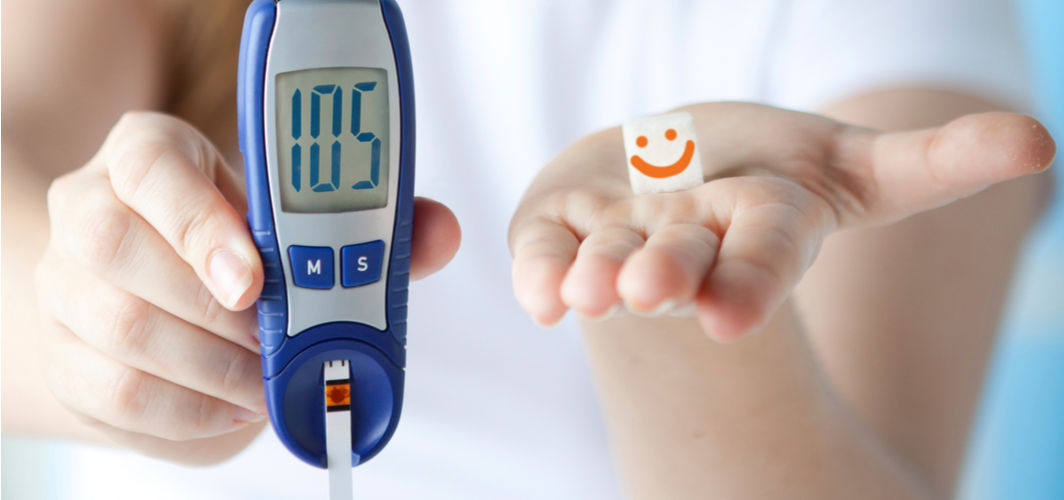Diabetes Management
Diabetic Foot: Can it be Prevented?
6 min read
By Apollo 24/7, Published on - 22 March 2021, Updated on - 29 August 2023
Share this article
1
18 likes

Uncontrolled or poorly managed diabetes can result in complications including nerve damage (diabetic neuropathy) that mostly affects the nerves on the legs and feet, a condition known as ‘diabetic foot’. Diabetic foot is an ulceration of the foot, which is associated with neuropathy, infection, and ischemia (poor blood circulation).
Foot problems such as infections, ulcerations and tissue damage are found in nearly 6% of people diagnosed with diabetes. As per the United Nations, every 30 seconds, a lower limb is amputated (removed) somewhere in the world as a consequence of diabetes. However, at least half of all diabetic leg amputations can be averted if blood glucose is managed well. The two major reasons for foot problems in diabetics include nerve damage (neuropathy) and poor blood circulation. With proper foot care, diabetics can prevent the development of an ulcer or blister on their foot.
What causes a diabetic foot?
The formation of ulcers on the foot can occur due to several reasons, some of which include:
- Nerve damage due to high blood sugar levels (diabetic neuropathy): People who have been suffering from diabetes for many years can develop neuropathy which reduces (sometimes diminishes) their ability to feel pain or temperature in their feet. As a result, the person is unaware of the pain, blister or ulcer that may develop on the bottom of their feet due to friction, pressure or trauma.
- Poor blood circulation: Poor circulation of blood (ischemia) can not only trigger the formation of an ulcer but can also slow down the healing process.
- Foot deformities: Structural deformities in the foot such as a bunion can irritate the skin of the feet while walking in shoes. This can trigger the development of an ulcer in their feet.
- Ill-fitted shoes: Shoes that do not fit well may put unnecessary pressure on the feet and can also cause friction while walking, which can trigger the formation of an ulcer.
Who is at higher risk of developing a diabetic foot?
Anyone diagnosed with diabetes can develop diabetic foot. However, people who are considered to be at higher risk of developing a diabetic foot include:
- People who have been suffering from diabetes for years
- People who use insulin to maintain their blood sugar levels
- Overweight people
- People who consume alcohol and smoke tobacco
- People who are suffering from diabetes-related kidney, eye or heart disease
- People suffering from vascular diseases (diseases related to the blood vessels) such as peripheral artery disease or deep vein thrombosis.
What are the signs and symptoms of a diabetic foot?
Usually, most people with a diabetic foot have already lost their ability to feel the pain, and hence, pain is not considered a common symptom. Other symptoms may include:
- Presence of some liquid discharge on the socks
- Redness and swelling in the feet
- Foul odour from the feet (in severe cases).
Can diabetic foot be prevented?
As per the World Health Organization (WHO), at least 50% of all diabetic leg amputations can be prevented by simple foot care. Diabetic foot can be prevented by adopting simple measures in daily hygiene routine. Recommendations include:
- Inspect the feet regularly for cuts, swelling, redness, sores, corns, calluses or blisters. Any change in the shape and colour of the nails must also be checked. One must check the bottom of the feet for plantar warts (skin-coloured growth on the bottom of the feet) or an ulcer.
- Wash the feet with soap and warm water. Make sure the water is not hot. Diabetics should avoid soaking their feet in the water.
- After washing the feet, the feet should be dried completely using a soft towel and talcum powder should be applied between the toes to avoid friction and possible infection.
- Moisturise the feet thoroughly with a lotion but avoid using it between the toes.
- Avoid walking barefoot. Diabetics should always wear socks, shoes or slippers to avoid injury. Check the inside of the shoes for any pebbles or sharp objects before putting them on.
- Wear well-fitted shoes to avoid the development of ulcers. New shoes should be worn for an hour or two with socks at first until they become completely comfortable.
- Use socks that have extra cushioning, do not have elastic tops, and are higher than the ankle.
- Do not let the feet get wet in snow or rain. If the socks get soiled, change them as soon as possible.
- Trim the toenails straight across. All the sharp edges should be smoothened gently with a nail file.
- Do not use any over-the-counter available product to remove corns and calluses as it can burn the skin.
- To keep the blood flowing, put the feet up or wiggle the toes for a few minutes while sitting and standing in a place for a long time.
- Practise feet-friendly exercises such as walking, riding a bicycle or swimming for at least 10 to 20 minutes daily.
- Maintain a healthy blood sugar level as increased blood glucose can reduce the ability of the body to fight off a potential infection and can also slow down the process of healing.
- Quit smoking as it reduces the blood flow to the extremities, including the feet.
- Add more fruits and vegetables to the diet and reduce the consumption of sugar and salt.
When to contact a doctor?
If a diabetic person develops ulcers or shows any signs of infection or sepsis, they must report to a doctor (endocrinologist/diabetologist) for immediate rehabilitation. Signs that require immediate medical attention include:
- Tingling or burning sensation in the feet
- Pain in the legs
- Cramps in the buttocks, thighs or calves while performing any physical activity
- Inability to feel touch and temperature (heat or cold)
- Change in the shape of the feet
- Drying and cracking of the skin on the feet
- Change in the colour of the skin
- Fungal infection between the toes
- Thick, yellow, ingrown toenails
- An ulcer, blister, sore or infected corn on the foot.
Takeaway
Diabetic foot is a serious complication of diabetes, which, if not treated in a timely manner can lead to severe complications. In extreme cases, it can result in amputation of the foot. However, it can be prevented by maintaining good control over the blood sugar levels, checking the feet every day, wearing proper footwear, and getting educated about the consequences of developing a diabetic foot.
Doctors generally examine the feet of diabetic people for any pre-ulcerative lesion on every visit. Diabetics must get screened for peripheral neuropathy and peripheral arterial disease frequently as they increase the risk of developing ulcers.
Consult an endocrinologist or a diabetologist for any queries related to diabetes.
You can also manage your diabetes like a pro with Apollo 24|7's 12-week empower programme.
Diabetes Management
Consult Top Diabetologists
View AllLeave Comment
Recommended for you

Diabetes Management
Adding a Smile to Your Diabetes Management
Oral hygiene is crucial for diabetics. Diabetes increases the risk of gum diseases like tooth decay and cavities. Hence, regular brushing, flossing, and dental check-ups are essential for diabetics to maintain good oral health and support overall well-being.

Diabetes Management
Genetic Testing May Help Determine the Cause for Type 1 Diabetes
Type 1 diabetes is an autoimmune disorder where the immune system attacks and destroys insulin-producing beta cells in the pancreas. A recent study suggests a specific dysfunction in exocrine cells of the pancreas may play a role in the development of type 1 diabetes. This finding expands our understanding of the disease and could potentially lead to new treatment approaches.

Diabetes Management
To Avoid Health Complications, This Is How Frequently You Should Check Your Blood Glucose
Tracking blood glucose levels is vital for diabetes management. The article explains how many times you need to check fasting and postprandial blood glucose levels.
Subscribe
Sign up for our free Health Library Daily Newsletter
Get doctor-approved health tips, news, and more.
Visual Stories

8 Fruits That are Incredibly Healthy for Diabetes
Tap to continue exploring
Recommended for you

Diabetes Management
Adding a Smile to Your Diabetes Management
Oral hygiene is crucial for diabetics. Diabetes increases the risk of gum diseases like tooth decay and cavities. Hence, regular brushing, flossing, and dental check-ups are essential for diabetics to maintain good oral health and support overall well-being.

Diabetes Management
Genetic Testing May Help Determine the Cause for Type 1 Diabetes
Type 1 diabetes is an autoimmune disorder where the immune system attacks and destroys insulin-producing beta cells in the pancreas. A recent study suggests a specific dysfunction in exocrine cells of the pancreas may play a role in the development of type 1 diabetes. This finding expands our understanding of the disease and could potentially lead to new treatment approaches.

Diabetes Management
To Avoid Health Complications, This Is How Frequently You Should Check Your Blood Glucose
Tracking blood glucose levels is vital for diabetes management. The article explains how many times you need to check fasting and postprandial blood glucose levels.
